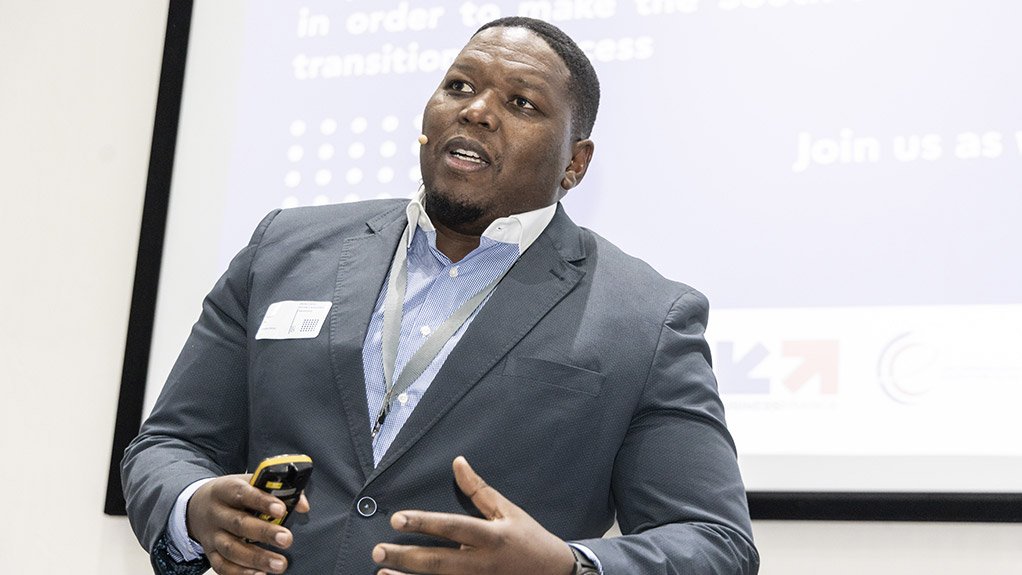Smart cities and the sum of their parts
This article has been supplied by the author and has not been written or solicited by Creamer Media. It may be available only for a limited time on this website.
By Thabang Byl, Digital Energy Lead at Schneider Electric
Business premises is one of the first places companies take stock of when assessing their electricity usage and the optimisation thereof. And rightly so, approximately 30% of global greenhouse gas (GHG) emissions, and 70% of energy consumption are attributed to buildings. Moreover, it’s estimated that 30% of energy is wasted in buildings.
Coupled with our country’s much-talked-about volatile grid, buildings must become smarter. Also, as it becomes smarter, through the upgrade of existing premises and development of new, smarter buildings, we will steadily see the dawn of a new era, the smart city.
If a smart building is a collection of disparate systems seamlessly working together, a smart city is a microcosm of disparate environments, including smart buildings and the grid, operating as one organism.
Cities define a civilisation, which shine light on the human element. Thus, today’s push for a smart building to meet these people-centric objectives, such as well-being and social cohesion, will form a key part of the transformative journey to a smart city.
Start first
However, for us to realise smart cities, we must lay the building blocks and it starts with buildings. A holistic building management system (BMS) is the key to a smart building strategy as it overcomes many of the struggles that both service providers and owners face when establishing a smart building.
At Schneider Electric, our BMS offering is a collaborative Internet of Things (IoT) solution that features a scalable, secure, and global architecture to make buildings of all types, smart.
It connects hardware, software, and services over a digital IP backbone to help service providers and owners maximise building efficiency, optimise comfort and productivity, and increase building value.
And the grid?
If there is one driver that is going to become a vital part of our journey towards smart cities, it’s electricity. The future relies on our ability to provide resilient electricity to the infrastructure within the smart city.
The grid’s ability to respond actively to surges in energy demand and supply will be a key enabler to realising our smart city vision. However, this also remains one of our biggest challenges, particularly with technology’s reliance on electricity.
Condition-based monitoring systems, for example, can lead to self-healing designs, which will in turn enable modernisation of the power system to an automated microgrid. Furthermore, smart grids will enable consumers to readily gain access to their energy data. This will enable them to autonomously make decisions on their energy consumption.
Let’s get real
To some, smart cities still feel like it belongs to an advanced civilisation in a Sci-Fi movie. Not quite, already we are seeing developments such as Steyn City emerging as bona fide mini smart cities which will or already feature entirely self-contained resources such as generators that protect its residents and tenants against power disruptions.
In South Africa, smart cities will likely be built on a smaller scale but the adage lead by example will undoubtedly drive the country towards implementing smart buildings that will eventually lead to bigger smart cities.
As a country we need to keep on investing and believing in the future of smart cities with leadership in both public and private sectors forging the way towards smart buildings and cities that establish a future built on sustainability, resiliency, hyper efficiency, and people centricity.
Comments
Press Office
Announcements
What's On
Subscribe to improve your user experience...
Option 1 (equivalent of R125 a month):
Receive a weekly copy of Creamer Media's Engineering News & Mining Weekly magazine
(print copy for those in South Africa and e-magazine for those outside of South Africa)
Receive daily email newsletters
Access to full search results
Access archive of magazine back copies
Access to Projects in Progress
Access to ONE Research Report of your choice in PDF format
Option 2 (equivalent of R375 a month):
All benefits from Option 1
PLUS
Access to Creamer Media's Research Channel Africa for ALL Research Reports, in PDF format, on various industrial and mining sectors
including Electricity; Water; Energy Transition; Hydrogen; Roads, Rail and Ports; Coal; Gold; Platinum; Battery Metals; etc.
Already a subscriber?
Forgotten your password?
Receive weekly copy of Creamer Media's Engineering News & Mining Weekly magazine (print copy for those in South Africa and e-magazine for those outside of South Africa)
➕
Recieve daily email newsletters
➕
Access to full search results
➕
Access archive of magazine back copies
➕
Access to Projects in Progress
➕
Access to ONE Research Report of your choice in PDF format
RESEARCH CHANNEL AFRICA
R4500 (equivalent of R375 a month)
SUBSCRIBEAll benefits from Option 1
➕
Access to Creamer Media's Research Channel Africa for ALL Research Reports on various industrial and mining sectors, in PDF format, including on:
Electricity
➕
Water
➕
Energy Transition
➕
Hydrogen
➕
Roads, Rail and Ports
➕
Coal
➕
Gold
➕
Platinum
➕
Battery Metals
➕
etc.
Receive all benefits from Option 1 or Option 2 delivered to numerous people at your company
➕
Multiple User names and Passwords for simultaneous log-ins
➕
Intranet integration access to all in your organisation



















